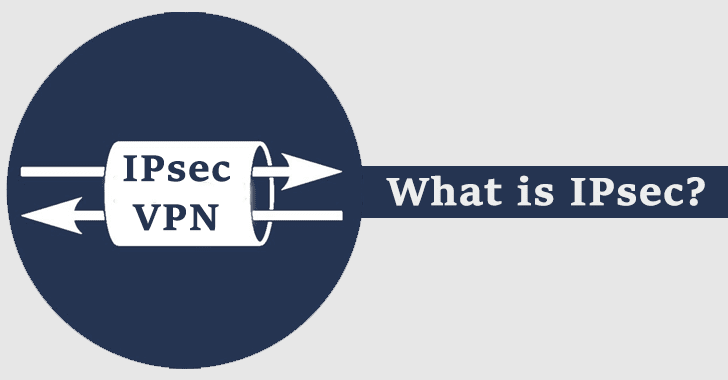Featured
Table of Contents
Ssl Vpn And Ipsec Vpn: How They Work
IPsec confirms and secures information packages sent over both IPv4- and IPv6-based networks. IPsec procedure headers are found in the IP header of a package and define how the information in a packet is managed, including its routing and shipment across a network. IPsec adds numerous components to the IP header, consisting of security information and one or more cryptographic algorithms.

ISAKMP is specified as part of the IKE procedure and RFC 7296. It is a framework for essential facility, authentication and negotiation of an SA for a protected exchange of packets at the IP layer. Simply put, ISAKMP defines the security criteria for how two systems, or hosts, communicate with each other.
They are as follows: The IPsec process begins when a host system acknowledges that a package requires protection and ought to be transmitted using IPsec policies. Such packets are thought about "fascinating traffic" for IPsec functions, and they set off the security policies. For outgoing packages, this implies the appropriate file encryption and authentication are used.
Transport Mode - An Overview
In the second action, the hosts utilize IPsec to work out the set of policies they will utilize for a secured circuit. They likewise validate themselves to each other and established a safe and secure channel in between them that is utilized to negotiate the way the IPsec circuit will secure or authenticate information sent out throughout it.

A VPN basically is a personal network implemented over a public network. VPNs are commonly used in businesses to make it possible for staff members to access their business network from another location.
Generally utilized in between secured network gateways, IPsec tunnel mode enables hosts behind one of the entrances to interact safely with hosts behind the other gateway. Any users of systems in a business branch workplace can securely connect with any systems in the primary office if the branch office and main workplace have safe entrances to act as IPsec proxies for hosts within the particular workplaces.
Transport Mode - An Overview
IPsec transport mode is utilized in cases where one host needs to engage with another host. The two hosts work out the IPsec circuit directly with each other, and the circuit is normally torn down after the session is total.
With an IPsec VPN, IP packets are protected as they take a trip to and from the IPsec gateway at the edge of a personal network and remote hosts and networks. An SSL VPN secures traffic as it moves between remote users and an SSL gateway. IPsec VPNs support all IP-based applications, while SSL VPNs just support browser-based applications, though they can support other applications with custom-made development.
See what is finest for your company and where one type works best over the other.
What Is An Ipsec Vpn?
Lastly, each IPsec endpoint validates the identity of the other endpoint it desires to communicate with, making sure that network traffic and information are just sent to the desired and permitted endpoint. In spite of its fantastic utility, IPsec has a couple of concerns worth discussing. Direct end-to-end communication (i. e., transmission method) is not always readily available.
The adoption of numerous local security guidelines in large-scale dispersed systems or inter-domain settings may present severe concerns for end-to-end interaction. In this example, presume that FW1 requires to check traffic content to find intrusions and that a policy is set at FW1 to deny all encrypted traffic so as to implement its content assessment requirements.
Users who utilize VPNs to from another location access a personal business network are put on the network itself, providing the same rights and functional abilities as a user who is connecting from within that network. An IPsec-based VPN might be produced in a variety of methods, depending on the requirements of the user.
1. Define Ipsec? 2. What Ipsec Used For? 3. What Are The ...
Since these parts might stem from various suppliers, interoperability is a must. IPsec VPNs make it possible for smooth access to business network resources, and users do not always need to utilize web access (gain access to can be non-web); it is therefore a service for applications that need to automate interaction in both methods.
Its framework can support today's cryptographic algorithms along with more powerful algorithms as they end up being readily available in the future. IPsec is a mandatory part of Internet Procedure Variation 6 (IPv6), which business are actively releasing within their networks, and is strongly advised for Web Protocol Variation 4 (IPv4) applications.
It offers a transparent end-to-end safe and secure channel for upper-layer protocols, and executions do not need modifications to those protocols or to applications. While having some disadvantages associated with its complexity, it is a mature procedure suite that supports a range of encryption and hashing algorithms and is extremely scalable and interoperable.
What Is Ipsec? Definition & Deep Dive
Like VPNs, there are lots of ways an Absolutely no Trust design can be implemented, however options like Twingate make the procedure considerably simpler than needing to wrangle an IPsec VPN. Contact Twingate today to read more.

IPsec isn't the most typical web security protocol you'll utilize today, but it still has an essential function to play in securing internet communications. If you're utilizing IPsec today, it's most likely in the context of a virtual personal network, or VPN. As its name implies, a VPN develops a network connection between 2 devices over the public internet that's as safe and secure (or nearly as secure) as a connection within a personal internal network: probably a VPN's many widely known use case is to permit remote staff members to access secured files behind a corporate firewall software as if they were operating in the workplace.
For most of this short article, when we say VPN, we mean an IPsec VPN, and over the next several areas, we'll describe how they work. A note on: If you're aiming to establish your firewall to enable an IPsec VPN connection, make certain to open UDP port 500 and IP ports 50 and 51.
Understanding Ipsec Vpn Tunnels

As soon as this has all been set, the transport layer hands off the data to the network layer, which is primarily controlled by code operating on the routers and other elements that comprise a network. These routers choose the route specific network packages take to their destination, but the transportation layer code at either end of the communication chain does not require to understand those details.
On its own, IP does not have any integrated security, which, as we kept in mind, is why IPsec was developed. Today, TLS is developed into practically all internet browsers and other internet-connected applications, and is more than enough protection for everyday web usage.
That's why an IPsec VPN can include another layer of protection: it includes protecting the packets themselves. An IPsec VPN connection begins with establishment of a Security Association (SA) between two communicating computer systems, or hosts. In general, this involves the exchange of cryptographic secrets that will enable the parties to secure and decrypt their communication.
Latest Posts
The 6 Best Vpn Stocks To Buy Right Now For August 2023
7 Best Vpn Services For Privacy & Security In 2022
10 Best Vpn Services For Startups 2023 - Truic